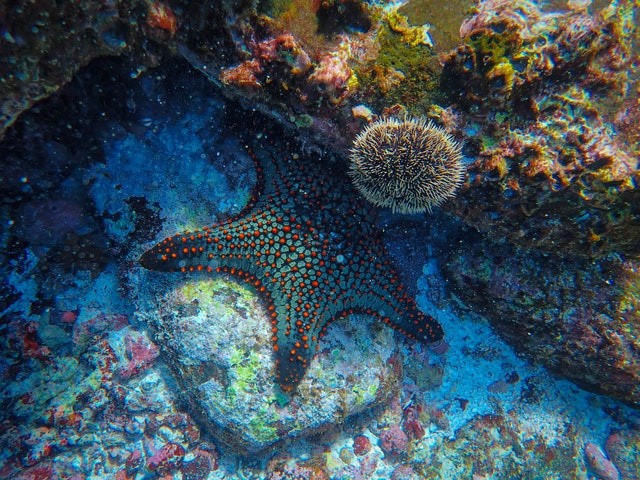Scientists have discovered a 480-million-year-old fossil in Morocco which sheds light on the missing link between modern starfish and their ancestors.

The fossil was found in the Anti-Atlas mountain range and effectively captured early revolutionary steps of the marine invertebrate at a particular time in the planet's history when life expanded suddenly.
This period is referred to as the Ordovician Biodiversification Event.
According to the researchers, the newly discovered fossil species showcases a highly intricate design, with feathery arms similar to a lacework.
The origin of echinoderms or starfish has eluded researchers for several decades.
But now, thanks to the new species which has been so remarkably preserved that the researchers can map out its entire body in great detail, the evolution of the marine animal can be understood, as stated by the researchers.
ALSO READ - Some Popular Fish and Invertebrate Seafood Species Rapidly Declining World Wide

Starfish Appear to Be Among the Longest-Living Organisms On Earth
According to a study published in a journal called Biology Letters, Cantabrigiaster fezouataensis, the species discovered by the researchers in Morocco, is adjudged to be the earliest starfish-like animal.
One of the paper's authors and Evolutionary palaeoecologist of Cambridge University, Dr. Aaron Hunter, stated that finding the missing link between the modern-day starfish and their ancestors is very exciting.
He added that if they went back in time and could see under the sea in the Ordovician, no one would be able to recognize any marine creature except the starfish, making them one of the first modern-day animals.
The fossil lacks up to 60 percent of a modern-day starfish's body structure or plan.
Its features are a hybrid between those of a sea lily or crinoid and a starfish. It doesn't look like a plant per se, but a heavy, wavy-armed filter feeder that fixes itself to the seabed through a cylindrical stem.
It is now possible for scientists to use the fossil as a complete template to precisely determine how the starfish evolved.
Dr. Hunter stated that the level of detail in the fossil is astonishing; its complicated structure took the research team a while before they could unravel its overall significance.
Dr. Hunter along with Dr. Javier Ortega-Hernandez, a co-author who was previously at Cambridge University, but is now based at Harvard University, readily examined this new species side by side with a wide range of starfish-like creatures.
The scientists indexed all their features and body structures to assess precisely how the fossil species was related or linked to other members of the echinoderm family.
Bear in mind that this diverse group of marine animals include starfish and sea cucumbers.
At the end of their analysis, the scientists indicated that only the food groove which funnels food along with every one of the starfish arms was present in the fossil species.
Every other thing outside this including the extra-axial body parts was added much later.
Scientist Plan to Explore Further
The authors have plans to expand their work by searching for early echinoderms.
Dr. Hunter hopes to establish and provide the answer to exactly why starfish developed their 5 arms. No one really knows why, even though it appears to be a pretty stable shape for the starfish to adopt.
The study authors have high hopes of getting their eyes and hands on the particular fossil to establish that connection. However, they may have to go way back to the starfish' early ancestors before they can get answers to their questions.
For more news and story updates about starfishes, don't forget to follow Nature World News!
© 2025 NatureWorldNews.com All rights reserved. Do not reproduce without permission.





